1967 Plymouth VIP: Very Important Plymouth?

Starting in the mid-1960s, the “Low Priced Three”—namely, Ford, Chevrolet and Plymouth—decided to go upscale. Said results included two models familiar to old car nuts: the Caprice and LTD. And a third, which only the most “with-it” Mopar devotees or Brougham aficianados will know of: The Plymouth VIP.
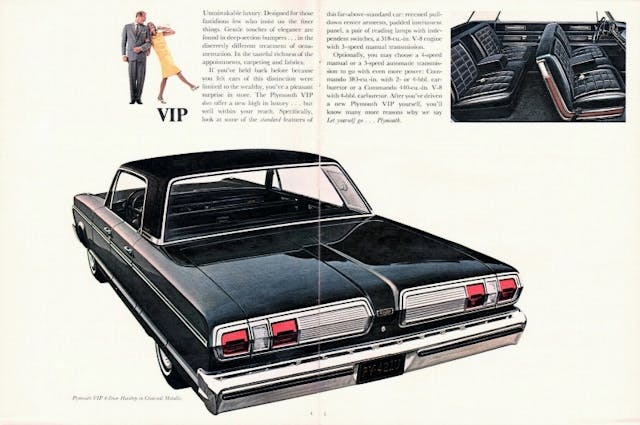
The VIP displaced the Sport Fury as the top big Plymouth in ’66, one year after the LTD and Caprice first appeared. And just like its competition, the VIP had the soon-to-be-typical chrome additions, plusher interior, vinyl roof, and wood-grained dash and door panels.

Although clearly a member of the Fury line, the VIP received its own special brochure apart from the Sport Fury and Furys III, II, and I. Initially available only as a four-door hardtop (a hardtop coupe came later), it was marketed as a Plymouth for folks who wanted the finer things in life.

Despite gilding the lily of the already well-equipped Sport Fury, the VIP looked as good as any of the other 1966 Mopar full-sizers, thanks to design chief Elwood Engel’s attractive square-rigged styling.
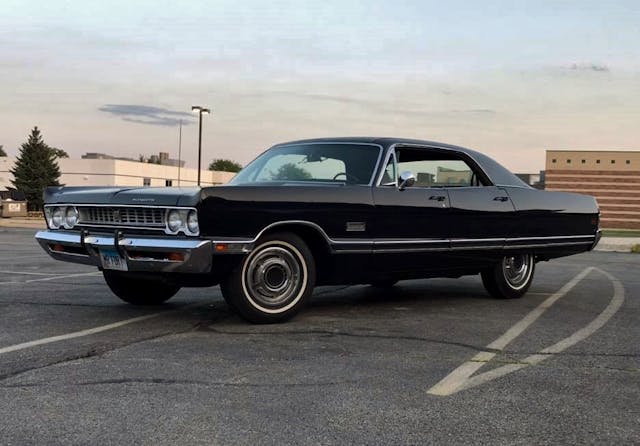
But only about 12,000 were built for 1966, compared to over 100,000 LTDs and 181,000 Caprices. And while it was, in your author’s opinion, as attractive and well-appointed as its cross-town rivals, it never broke 20,000 units during the four years it was the top of the line Plymouth. It last appeared in 1969.

But new plans were afoot for the ’67 model year. While the ’66 Plymouths were most attractive, their squared-off styling was a little out of style with the advent of GM’s swoopy 1965 Chevrolets. The 1967 Plymouths presented smoother, swoopier styling. Especially attractive was the new “Fast Top” roofline, as shown above. This body style was limited to only the Sport Fury and VIP hardtop coupes.

The VIP was back, all new, and with plenty of new Broughamtastic features, particularly inside. Several square feet of woodgrained trim graced the doors and lower instrument panel, along with a filigreed gold medallion that would not look out of place as a belt buckle at Studio 54 just a few years in the future.

The VIP remained available only as a hardtop coupe or four-door hardtop. No pillared sedans and no station wagons were available in the top-dog Plymouth. The VIP four door is shown here, and looks particularly fetching in black over red, with the snazzy turbine-style wheel covers. The VIP sedan sold a bit better than the coupe, to the tune of 10,830 units, and started at $3182 (about $28,216 today). Most of them likely went out the door for a fair bit more than that, considering the extensive option list.
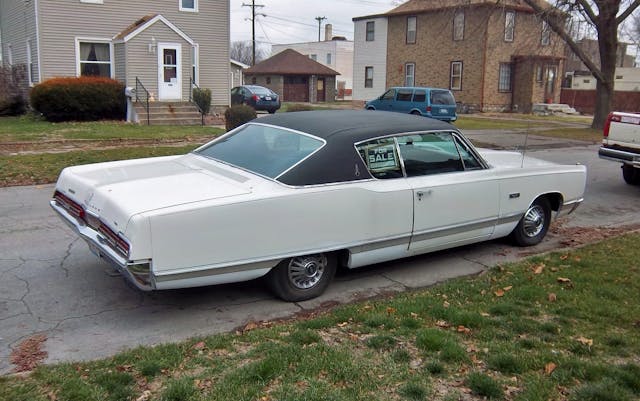
It seems strange that Plymouth didn’t offer the VIP as a convertible; that remained the domain of the Sport Fury. Drop-top aficionados had to shell out $3279 ($29,076) for a Sport Fury, or a slightly cheaper $3118 ($27,649) Fury III variant.
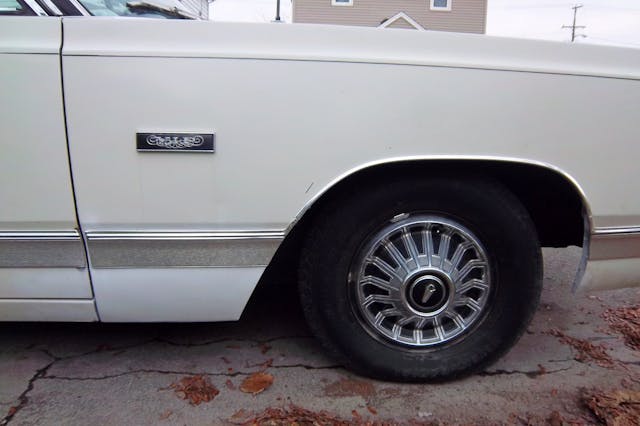
The Fury III hardtop coupe, although nicely styled, had an angular roofline had been around on Plymouths and Dodges since 1963 and looked a little out of date. You could also get this body style as a Sport Fury. Formal, yes, but you could always go for the swoopy Fast Top coupe instead. The cheapest big Plymouth was the Fury I two-door sedan, with virtually no chrome trim outside of bumpers and emblems. Priced at $2473 ($21,929), it was also seldom seen; a mere 6647 were produced.

The tried-and-true Slant Six was standard equipment in almost all Fury I, II, and III models, though the Fury II/III wagons and Fury III four-door hardtop and convertible did come with the 318-cubic-inch V-8. The Plymouth Six was, of course, the bulletproof 225-cu-in Slant Six that had debuted in the 1960 Valiant compact. With a single-barrel carb and 145 horsepower. The smaller 170-cu-in Slant Six was not available in full-size Plymouths, being confined to the Valiant line. Probably a good move.
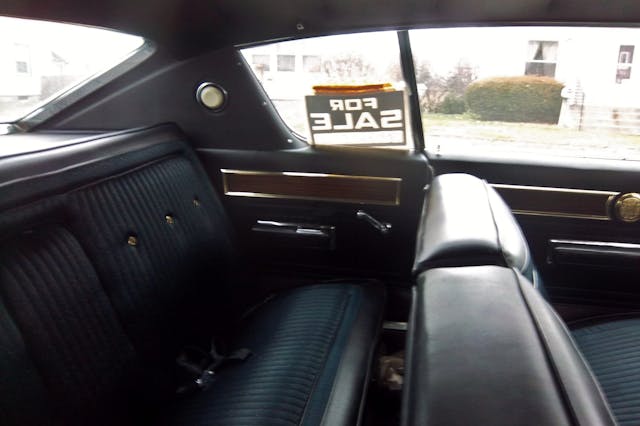
All 1967 fullsize Plymouths, regardless of model, got standard carpeting, armrests, heater/defroster, back-up lights, dual brake system, an energy-absorbing steering column, and seatbelts. While none of those sounded really exciting to someone ordering a fully-loaded VIP, I imagine it warmed skinflints’ hearts when they were selecting a Fury I. The VIP remained the top of the line, and as such featured prominently in Plymouth advertising, along with the Sport Fury and new-for-’67 Barracuda.

The two-model VIP line featured all Fury III equipment in addition to faux walnut interior trim, Deluxe gold-fleck cloth upholstery with vinyl bolsters, Deluxe wheel covers (those cool turbine wheel covers were optional), 15-inch wheels, light group, and Flow-Through ventilation.
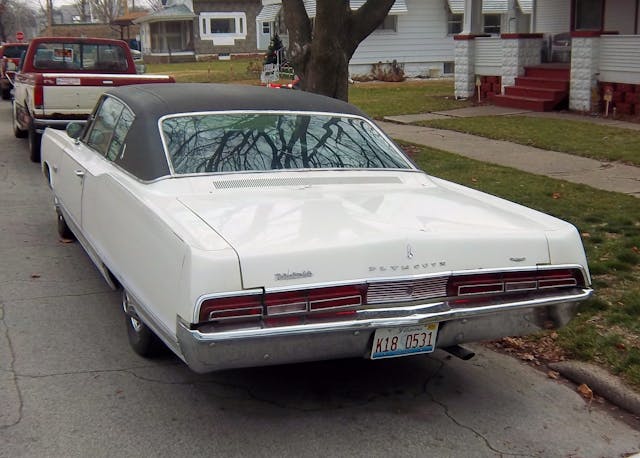
VIPs came standard with a 230-hp 318 V-8, breathing through a two-barrel Carter carburetor. If that wasn’t enough motivation for you, also availaber were a two-barrel, 270-hp 383 ($70); four-barrel, 325-hp 383 ($120); or the top-of-the-heap four-barrel, 375-hp 440 V-8 ($268).
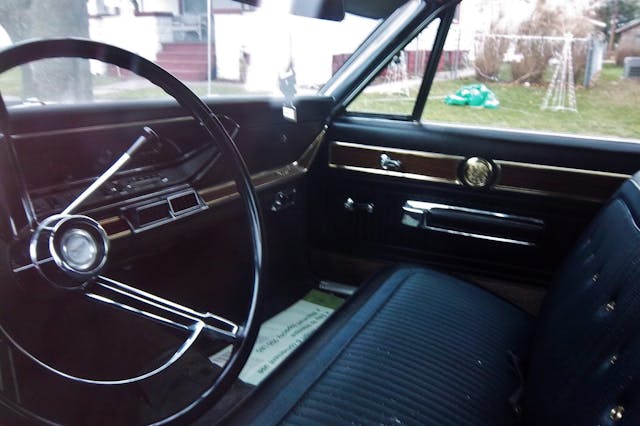
While the VIP was pretty well equipped, with its sparkly upholstery and extra chrome, you could easily tack on an additional $500–$750 in options if you wanted to. The available niceties included air conditioning ($338), automatic speed control ($83), power brakes ($42), power steering ($95), front disc brakes ($70), and a six-way power bench seat ($94). Also available was leather upholstery, available only on the VIP, for $104.
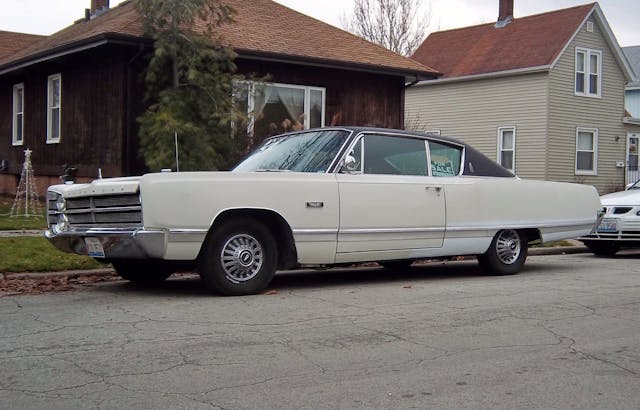
The 3630-pound VIP hardtop coupe started at $3117, which was $65 cheaper than the VIP four-door hardtop. It was also the less-popular model of the two-car VIP series, with 7912 produced.

As the 1967 VIP production suggests, the model never really took off, certainly not like the LTD and Caprice. Why not is anyone’s guess, but for some, “Sport Fury” may have sounded a lot better than “VIP.” A likely explanation is the Chrysler-Plymouth dealer network itself. After pricing out a loaded VIP, I imagine it was an easy step to just get a Chrysler Newport instead. The Chrysler name certainly had more cachet than Plymouth in the late ’60s.
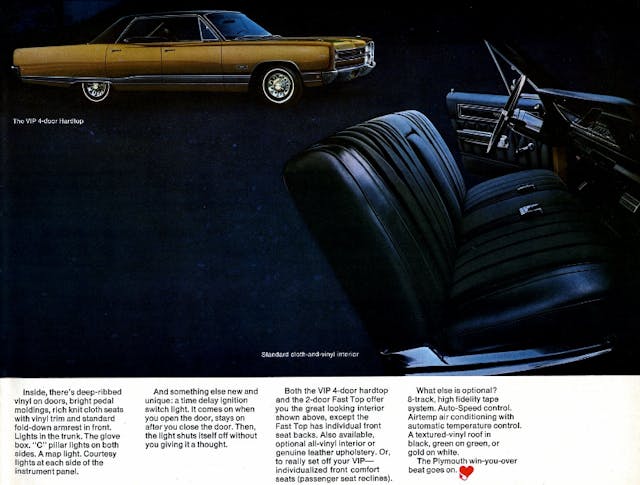
The 1968 VIPs had the expected “new model year” trim changes and new wheel covers, but at a glance, they were very similar to the ’67s.
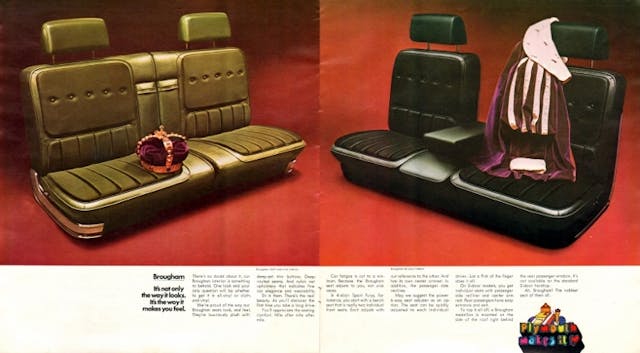
The VIP last appeared for the 1969 model year. In 1970, the Sport Fury once again ruled the Plymouth roost, with a new four-door hardtop model standing in for the ’69 VIP version. The true successor to the VIP in ’70 was, believe it or not, the Sport Fury Brougham. Talk about mixed messages! Eventually, the Gran Fury moniker became the top of the line, but even it never reached the sales success of its cross-town-Detroit and Dearborn competitors … though it did do better than the VIP.

I found our featured VIP in December 2012. I was driving along 14th Avenue in Rock Island (Illinois) near Augustana College when I spotted some distinctive ’60s-style stacked headlamps off to my right.

At the time, this was the first full-size ’67 Plymouth I’d seen in a long time. That it was the scarce VIP instead of a much more common Fury was the icing on the cake. Too bad it wasn’t in a flashier color combo, like those shown in the ’67 brochure. But it seems that white with a black top and interior was VERY popular on cars in the ’60s. I’d have preferred a nice blue, green, or burgundy, with a matching interior.
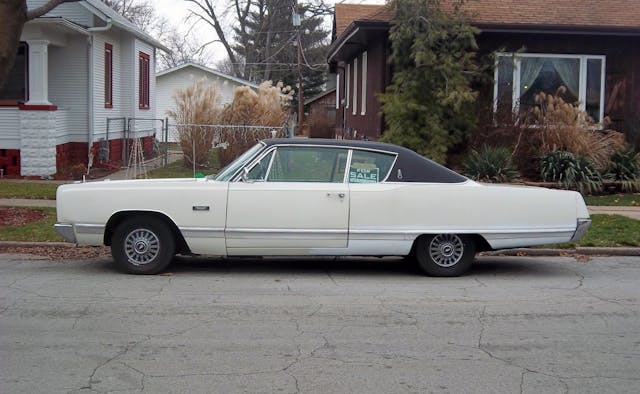
You could tell that the car had some rust repair in the past, judging from the lighter patches of white paint on the rear quarter panels, but it was in very decent condition. A rare birdie indeed: 1967 produced 7912 VIP two-door hardtops and 10,830 VIP four-door hardtops.

It was a real thrill to spot this one—and it’s still around. Late in the summer of 2021 I spotted it in Moline, parked next to a repair shop, and it was in about the same condition as the last time that I saw it. Unfortunately the next time I drove by, intending to get some updated photos, it was gone.
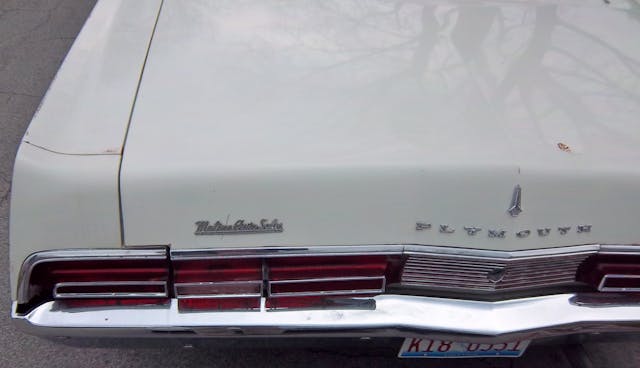
Check out the Hagerty Media homepage so you don’t miss a single story, or better yet, bookmark us.


Tom, is this not a blast from the past or as they say in the broadcast industry a rerun? Yes I do believe you have written this story before. I know it is hard to keep track given the many outlets that you scribe for and publish you fine work but I know I read this before…, just wondering.
I first saw it on Curbside Classics years ago, so yes, you’ve seen it before. Looks like Hagerty’s is running some of Klockau’s “classic” articles, though he did update this one a little bit at the end.
I remember seeing this story on Curbside Classic some years ago, but see it’s had a bit of an update. I love the ’67-68 fast top Furys in all variations. I had a ’67 Sport Fury originally but now I have a ’68 VIP fast top which sees three season driving. It’s one of the 6,768 two door VIPs for that year, and judging from Facebook pages and C-body forums, the ’68 VIP two door seems to have a pretty high survival rate. It should, they’re great cars. Few things make me happier than driving mine.
The rare bird in the Fury line is the Custom Suburban from 1968. So far as I can tell (and you have better resources than I for certain!), the Fury II Custom Suburban wagon numbered less than 7000 units in 1968. Far more common to see the Fury III version at more than twice that number.
My family bought a Custom Suburban in 1970. It’s a little rough now (typical tired paint etc, from being a Texas ranch car), but still runs 52 years later. Ever so often I still haul it out and let it rumble down the road.
Grew up with a 68 Custom Suburban. 2V 383 had plenty of punch – 4 x 8 sheets of plywood were hauled!